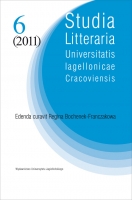What’s past is prologue: the Age of Caliban
What’s past is prologue: the Age of Caliban
Author(s): Anna Kowalcze-PawlikSubject(s): Literary Texts
Published by: Wydawnictwo Uniwersytetu Jagiellońskiego
Keywords: Shakespeare; Caliban; Prospero; monstrosity; bestial man; reception history; postcolonial studies; cultural studies; Renaissance literature; English drama
Summary/Abstract: The article provides a brief comparative study of the reception history of Shakespeare’s Caliban in the early modern period and in the contemporary literary criticism. The analysis aims to delineate a fundamental difference in the reception of the character of Caliban throughout the ages which I attribute to a historical shift in the understanding of the notions of humanity and monstrosity. The first part of the article concentrates on the description of the historical and social circumstances of the Elizabethan discourse of monstrosity and draws a link between them and the literary and political context of the time, while engaging into a close reading of The Tempest that brings to the fore the origin and nature of the “servant-monster”. The second part of the paper focuses on the gradual change in the interpretations of Caliban who ceased to be seen as a monstrosity and with time acquired undeniably human characteristics. That shift has been observable since the 19th century and has found its culmination in the postcolonial strain of Caliban’s contemporary interpretations, in which Prospero’s slave becomes a native trying to find a language for himself in a colonial regime his body and mind are subjugated to. The postcolonial project of the unfinished monstrous humanity of Sycorax’s son is congruous with the postmodern condition that can be dubbed, to use Harold Bloom’s phrase, “the Age of Caliban”. It is exactly that liminal and paradoxical notion of monstrous humanity that resides at the core of the contemporary fascination with “Monsieur Monster”.
Journal: Studia Litteraria Universitatis Iagellonicae Cracoviensis
- Issue Year: 2011
- Issue No: 6
- Page Range: 53-63
- Page Count: 11
- Language: English

